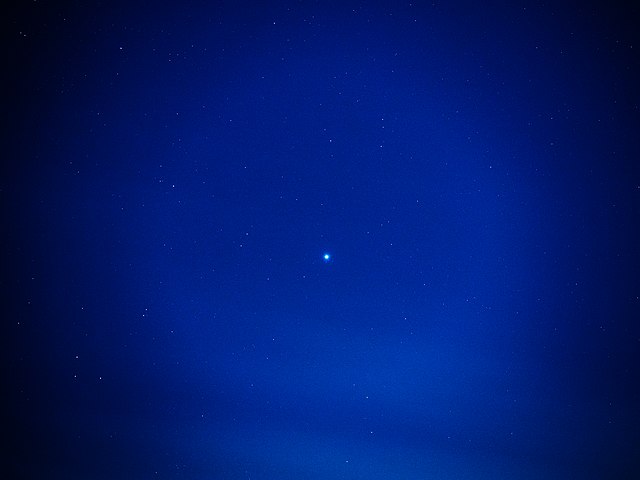Canis Major is a constellation in the southern celestial hemisphere. In the second century, it was included in Ptolemy's 48 constellations, and is counted among the 88 modern constellations. Its name is Latin for "greater dog" in contrast to Canis Minor, the "lesser dog"; both figures are commonly represented as following the constellation of Orion the hunter through the sky. The Milky Way passes through Canis Major and several open clusters lie within its borders, most notably M41.
Sirius A, the brightest star in the night sky, lies in Canis Major.
Canis Major as depicted on the Manuchihr Globe made in Mashhad 1632–33 AD. Adilnor Collection, Sweden.
Canis Major, observed above Kuantan (north is towards top right)
The stars of Canis Major as they can be seen by the naked eye; lines have been added for clarity.
Canis Minor is a small constellation in the northern celestial hemisphere. In the second century, it was included as an asterism, or pattern, of two stars in Ptolemy's 48 constellations, and it is counted among the 88 modern constellations. Its name is Latin for "lesser dog", in contrast to Canis Major, the "greater dog"; both figures are commonly represented as following the constellation of Orion the hunter.
Canis Minor, as depicted by Johann Bode in his 1801 work Uranographia
The constellation Canis Minor can be seen alongside Monoceros and the obsolete constellation Atelier Typographique in this 1825 star chart from Urania's Mirror.
The constellation Canis Minor as it can be seen by the naked eye
Nebula Abell 24








